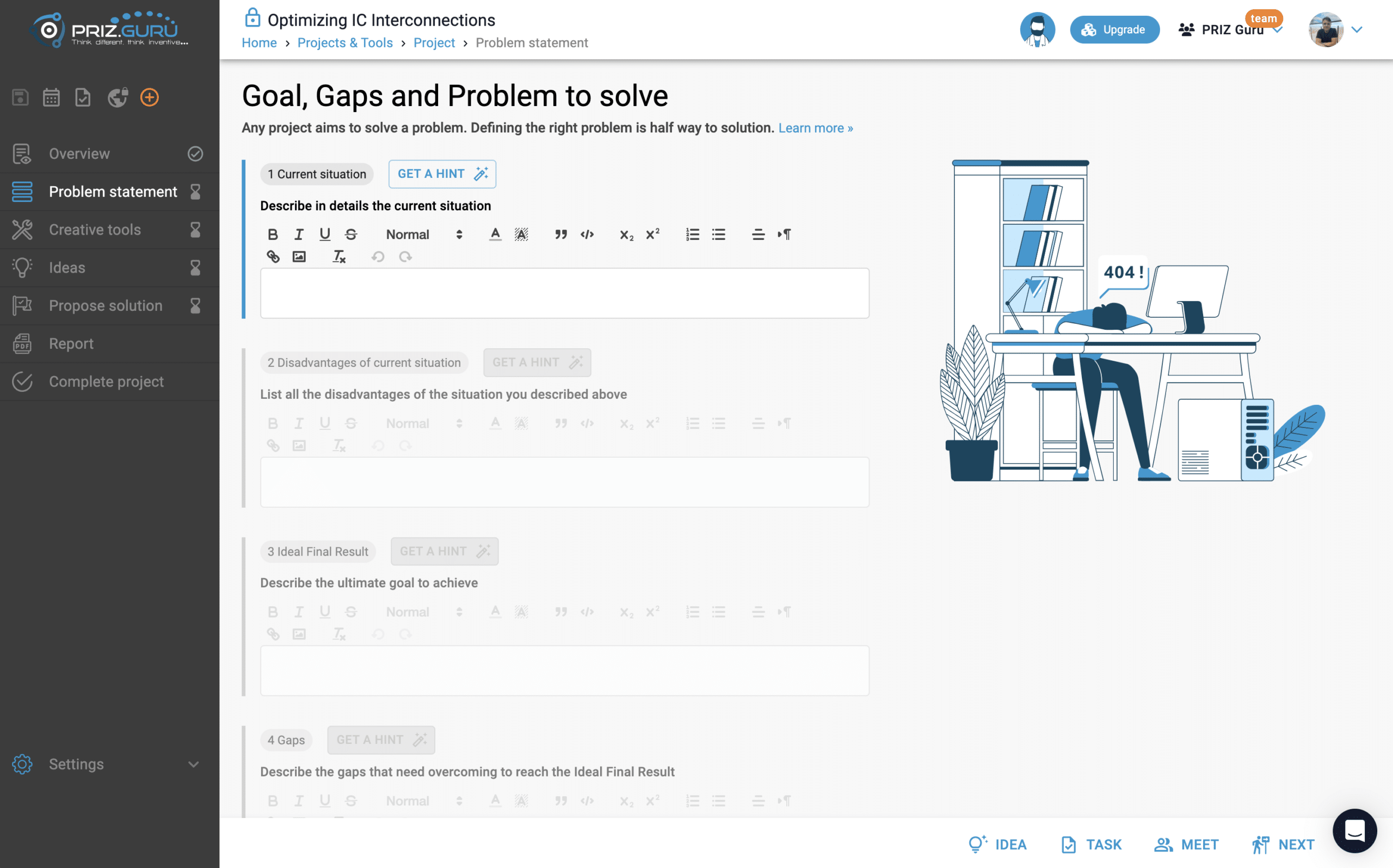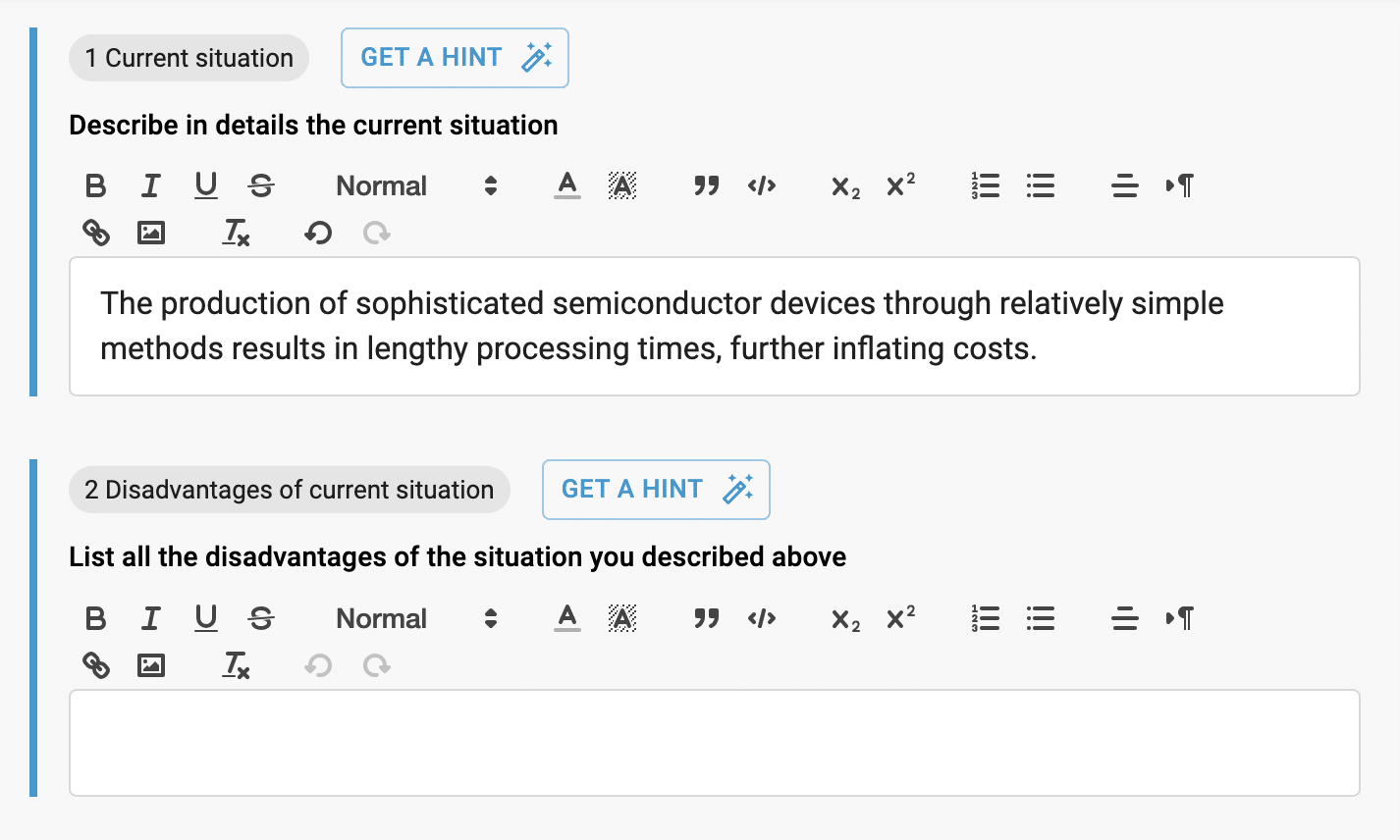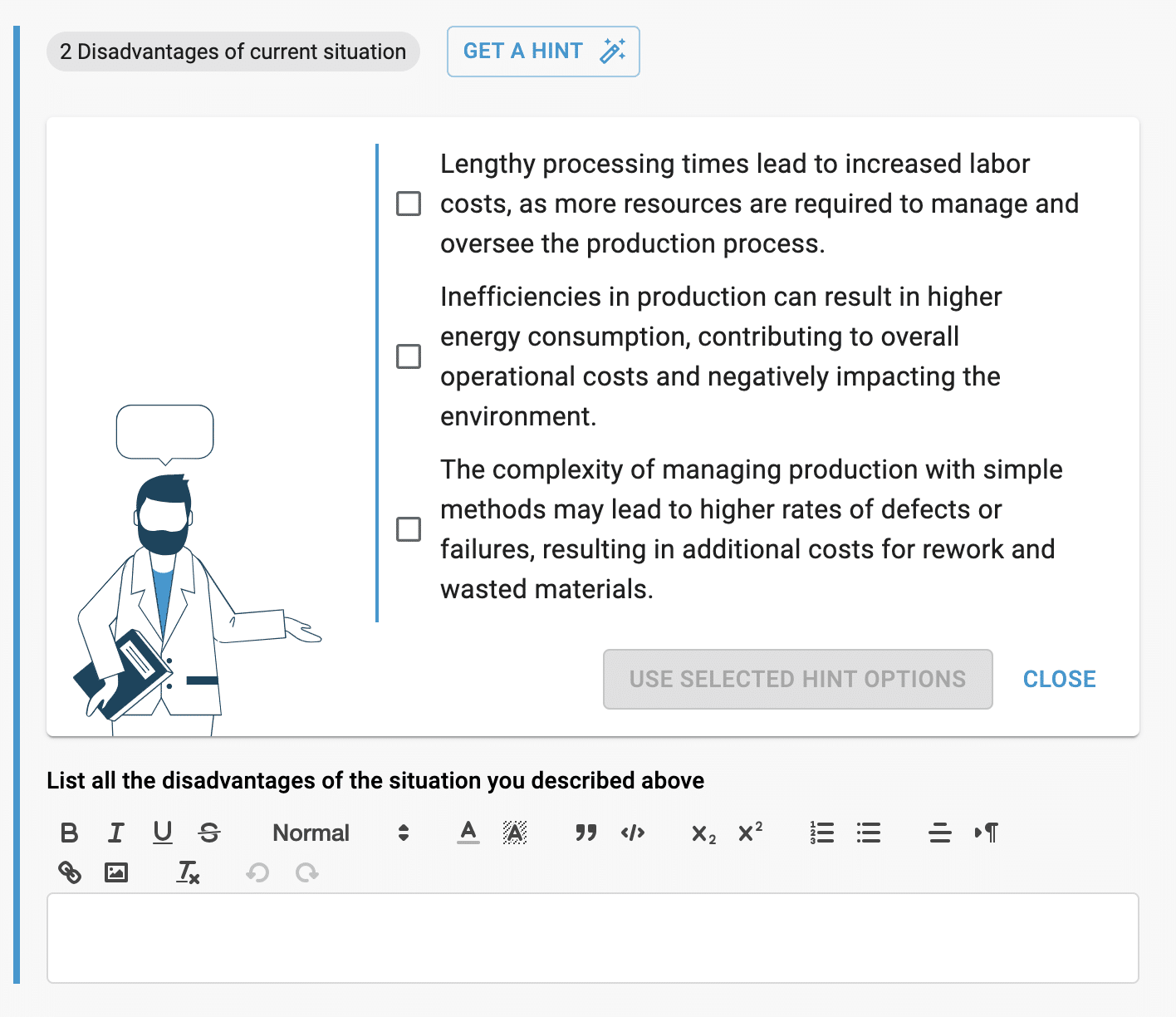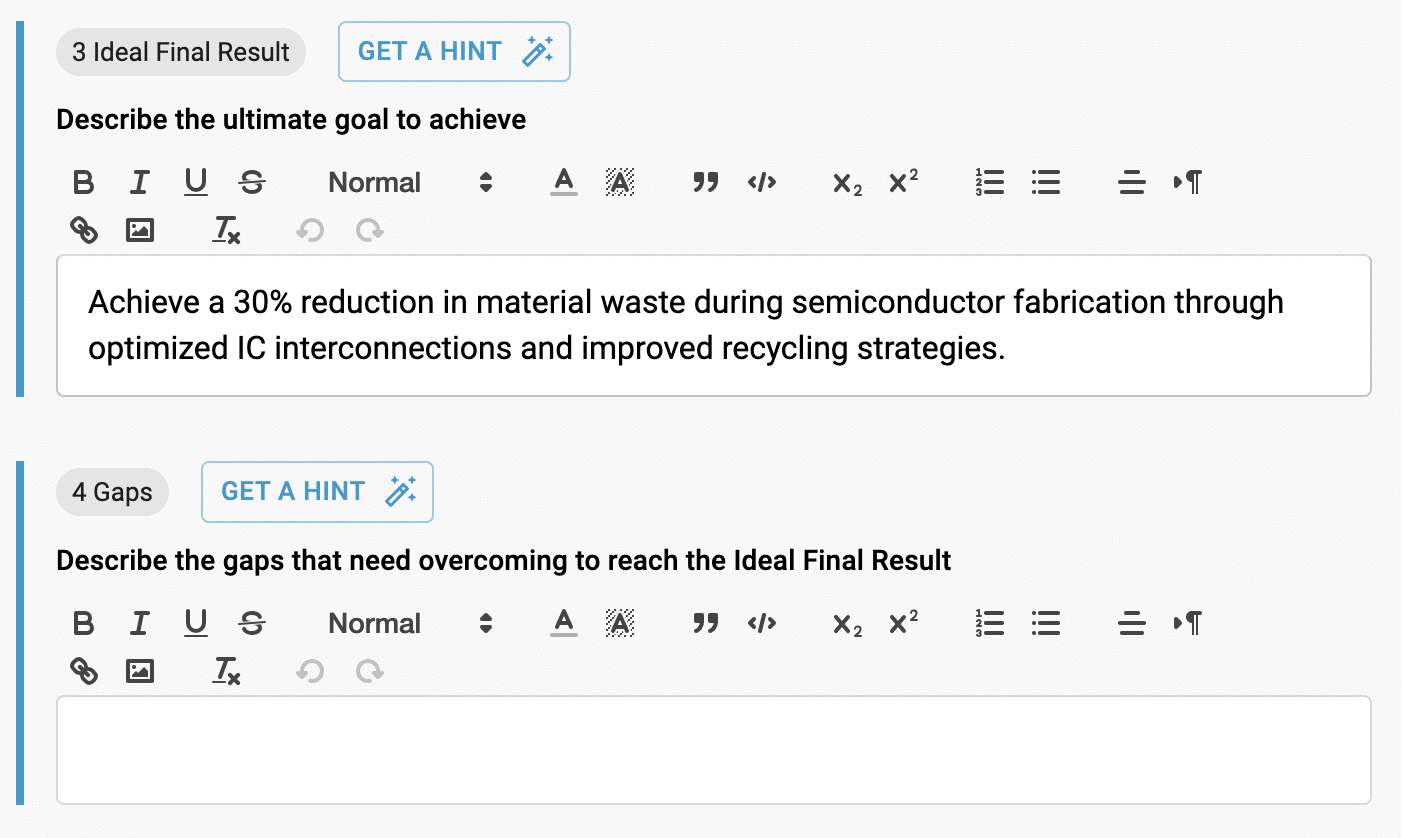Building a proper problem statement is fundamental to successful innovation because it ensures teams focus their efforts on solving the right challenges. A well-defined problem statement helps prevent wasted resources on addressing symptoms rather than root causes, guides the direction of solution development, and provides a clear benchmark against which potential solutions can be evaluated. Getting this step wrong often leads to ineffective solutions that fail to address the underlying issues.
Building Problem Statement
Follow our intuitive 5-step process to create your problem statement in the PRIZ Engineering Thinking Platform. The platform guides you step-by-step, with each new stage becoming available after you complete the previous one. This structured approach ensures thorough problem definition and analysis.

1. Current Situation
Start by describing what you observe – the visible symptoms or issues that indicate a problem. We refer to this as the “failure” in your system or process.
Examples include flat tire, leaking pipe, or high production cost.
Note: While these symptoms are often mistaken for the core problem, the actual problem lies in their consequences and impacts.
For guidance at this step (and throughout the process), use our AI Assistant. It provides helpful prompts to guide your thinking and analysis.

The platform automatically saves your work as you type, so you can focus on defining your problem without worrying about saving manually.
2. Disadvantages of the Current Situation
After defining the failure, proceed to identify its disadvantages. In this step, document the negative impacts and consequences of the current situation. List all relevant disadvantages – there may be one or several.

For example, if the failure is “High cost of production“, the disadvantages might include:
- Customer dissatisfaction
- Declining sales
- Reduced shareholder investment
- Additional business impacts
The AI Assistant can provide up to 3 suggested options for disadvantages. While these suggestions serve as helpful guidance, make sure to review and customize them to accurately reflect your specific situation.

You can proceed to the next step after documenting the disadvantages. Don’t worry about being exhaustive – you can always return to add or modify items later as your understanding evolves.
3. Ideal Final Result
The next step is defining your Ideal Final Result (IFR). This represents the optimal state of your system if the problem you’re analyzing did not exist. The IFR helps guide solution development by establishing a clear vision of the desired outcome.
Our AI Assistant is available to help you define and refine your IFR efficiently.

4. Gaps
Identify the gaps between your current situation and the Ideal Final Result (IFR). These gaps represent the key obstacles or limitations preventing you from achieving the ideal state immediately. The platform will help you analyze each obstacle in a structured way.
Our AI Assistant can help you identify and prioritize the most significant gaps, ensuring you capture all critical barriers to success.

5. Problem to solve
The final step is formulating your problem statement. Based on the information gathered in previous steps, you can now precisely define the core issue to be solved.
According to best practices in problem-solving methodology, focus on one specific problem at a time. This targeted approach ensures clear direction and measurable outcomes in the PRIZ Innovation Platform.
Your problem statement should directly connect the identified issue with its key impact. For example:
- “High production costs are causing decreased shareholder investment, impacting business growth.”
- “High production costs are driving up unit prices, resulting in declining sales volume.”
- And so forth…

Contact us with any questions.